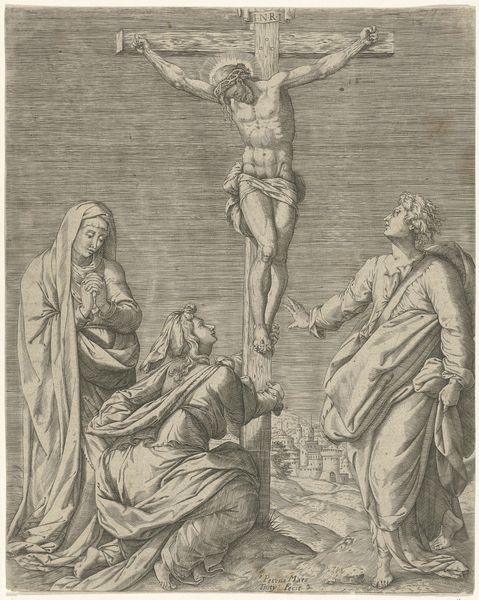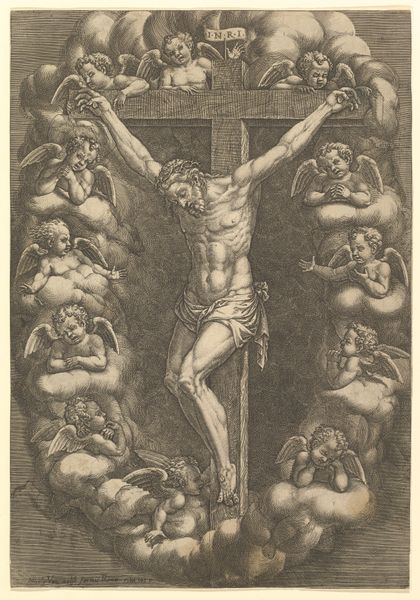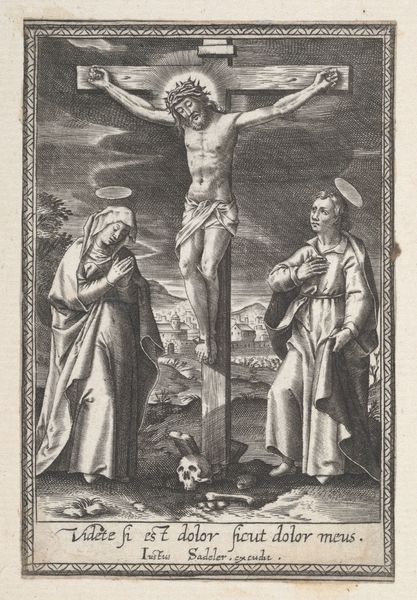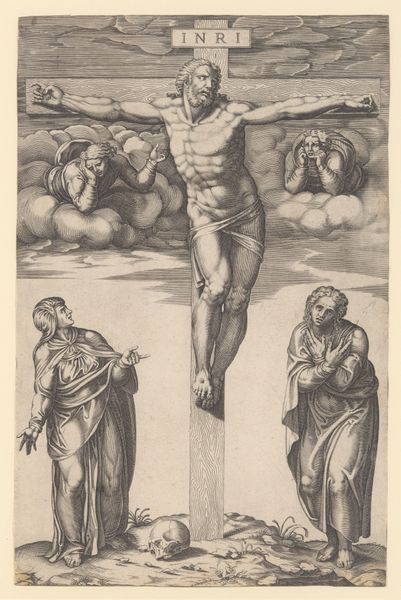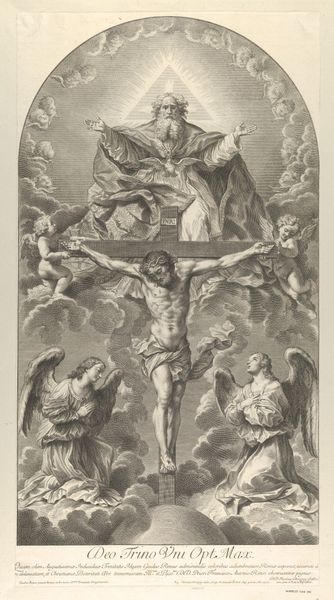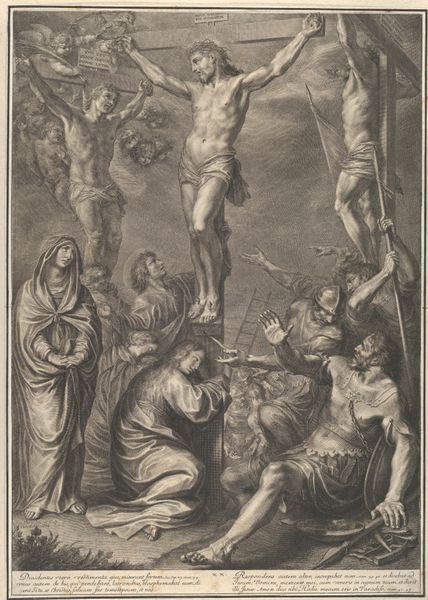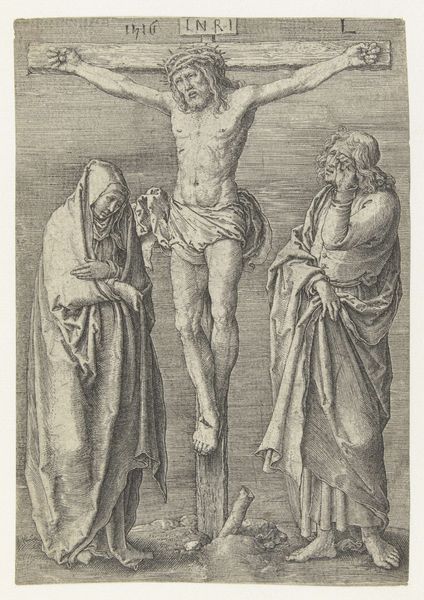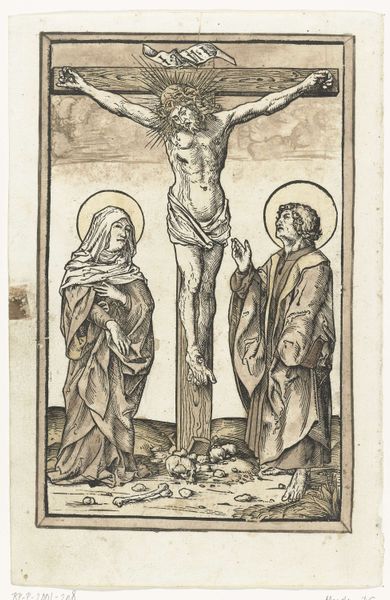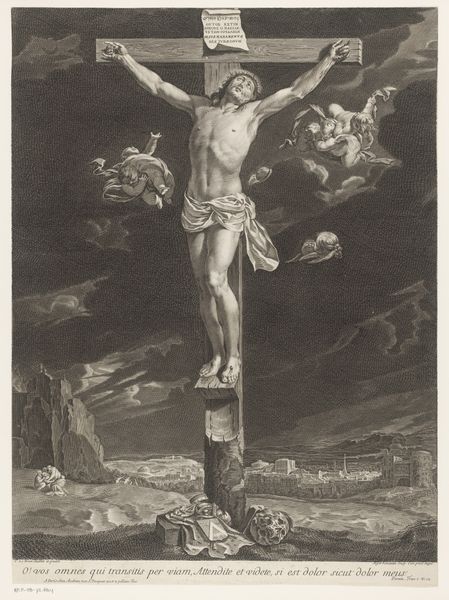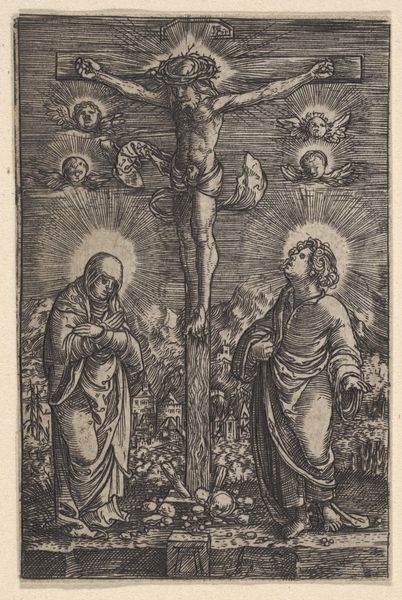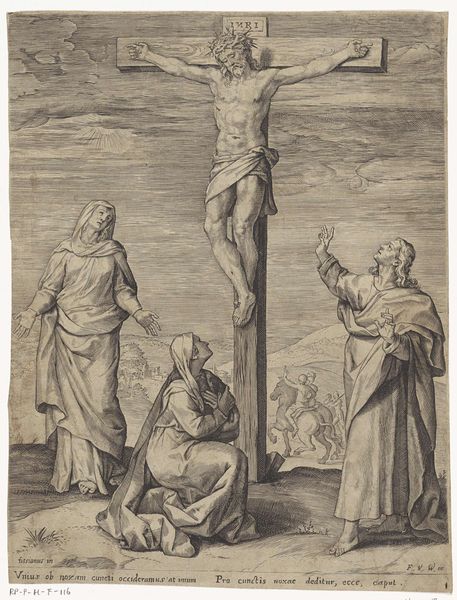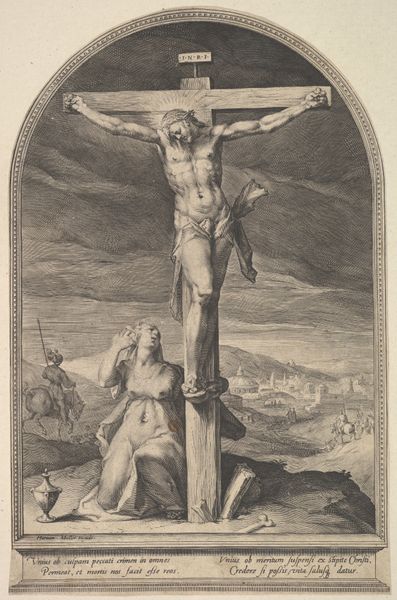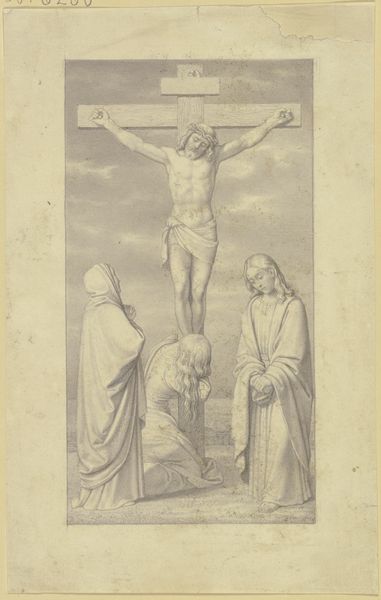
The Crucifixion with the Virgin, the Magdalen, and St. John 1575 - 1582
0:00
0:00
drawing, print, engraving
#
drawing
# print
#
mannerism
#
figuration
#
form
#
line
#
crucifixion
#
history-painting
#
italian-renaissance
#
engraving
#
virgin-mary
#
realism
Dimensions: Sheet: 10 5/16 x 7 1/16 in. (26.2 x 17.9 cm)
Copyright: Public Domain
Curator: This print, dating from 1575 to 1582, captures "The Crucifixion with the Virgin, the Magdalen, and St. John." The work is attributed to Giorgio Ghisi. Editor: The sheer drama jumps right out, doesn't it? Those swirling clouds and the figures drenched in sorrow... it's intensely theatrical, almost operatic in its despair. Curator: Ghisi was working in that Mannerist style; all dramatic and artificial. What intrigues me is the detail, especially given it's an engraving. He coaxes so much light and shadow from those fine lines. Editor: Indeed. Considering its historical context, this piece invites us to explore how religious narratives intersect with power dynamics. The subjugation depicted echoes historical and contemporary oppressions. It compels questions: Who is afforded grace, and who bears the burden of sacrifice within such structures? Curator: I’m drawn to Mary Magdalene at the foot of the cross. She seems lost in her own private world, completely undone. I wonder what it felt like for Ghisi to render such profound grief. Editor: The composition certainly reinforces patriarchal narratives but considering the placement and size of Mary Magdalene perhaps Ghisi attempted to reclaim female experiences of loss during religious turmoil. Her raw emotion subverts traditional depictions of female passivity, pushing against the grain of conventional representations. Curator: It does make you ponder on faith. You've made me see it with new eyes – not just the suffering, but those subtle currents of resistance shimmering through. Editor: Absolutely. Engaging with works like these demands a critical eye toward not only artistic intention but also societal frameworks. That is the key to finding agency and historical perspective when viewing a historic work through our contemporary lens.
Comments
No comments
Be the first to comment and join the conversation on the ultimate creative platform.
